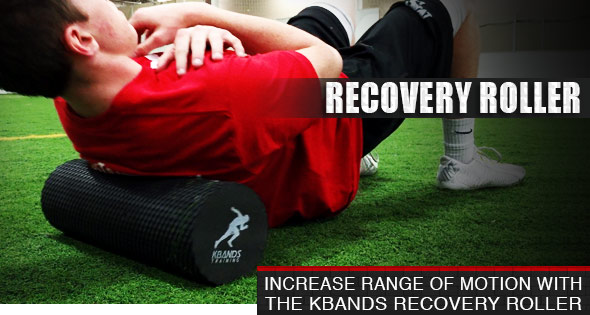Foam Roller Workout | Forearm Stretches
Do you have forearm pain or elbow tenderness? Many athletes find forearm pain to be a cause of many issues throughout their upper arm. To address these issues it is important to learn the proper techniques to stretch your forearm. One of the most effective ways to stretch your forearm is to complete Recovery Foam Rolling exercises. With proper technique and application you will find your forearm loosens and the pain dissipates. Review the video below as we discuss the proper application of the Recovery Foam Roller.
Forearm Stretches To Alleviate Tennis Elbow
Recovery Foam Roller workouts, such as this one, can help alleviate tennis elbow. Tennis elbow is a condition on the outer elbow/forearm region. It will cause irritation and pain during many daily activities. The cause of tennis elbow is often times acute injuries, but sometimes they may be chronic. Continuous overuse can cause inflammation throughout the tendons in the upper forearm leading to discomfort. As discussed in the video, by turning your hand in a supinated position you can target the muscles that are irritated by tennis elbow.
To effectively roll the upper forearm you will begin with your hand in a supinated position. You will also need to be on your knees facing the Recovery Foam Roller. Begin stretching the upper forearm by rolling the length of the muscle with an open hand position. If only slight discomfort is felt, you will begin driving more of your weight into the Recovery Foam Roller. This will cause a deeper tissue massage, increasing blood flow to the area, relaxing the muscles. Use a combination of static holds and deep tissue massage techniques to target trigger points in your upper forearm.
Forearm Stretches To Alleviate Golfers Elbow
Golfers elbow is just as much of a nagging injury as tennis elbow. Golfers elbow is caused by inflammation on the inner elbow or forearm. Golfers elbow can cause pain when gripping items, typing, or throwing. It is an irritating pain that never goes away, lingering during every activity that you complete, making exercise very difficult and painful.
To attack the trigger points on the inner elbow or forearm, you'll use the same techniques. Utilize static holds for 15 to 20 seconds on any tender areas and stretch the forearm from end to end. You will also complete deep tissue massage therapy with the Recovery Foam Roller. To do this you will locate a trigger point on your forearm. Next, continually roll over the trigger point in 1 to 3 inch rolls to break up scar tissue and increase blood flow to the area. Repeat this forearm stretching method for 15 to 20 seconds before moving to the next adhesion.
As you complete the forearm stretch on both the outer and inner portions of your forearm you will move to the other arm. You may find that one arm is more tender than the other. This can be caused by overuse of your dominant hand. With continuous writing, swings, or even long bouts of gripping can cause an overuse injury. Tennis is a good example. Athletes playing tennis must continually use their dominant hand to return shots from an opponent. With crosscourt forearm returns and soft backhand volleys, tennis players must maintain proper grip on the tennis racket throughout the match. Each swing flexes the forearm tendons and muscles required to drive through each shot. Each motion requires a strong handgrip to make the proper return shot. With hours of competition it is easy to see how an athlete can develop forearm pain and tension.
Stretch The Biceps and Triceps
As you master the effectiveness of the Recovery Foam Roller it is important to realize that connective tissue near the origins and insertions of your muscles play a major role in tension found in your forearm. Tightness in the bicep can greatly affect the inner elbow. Take for example a bicep training day. With multiple exercises and repetitions and set combinations the biceps will become fatigued. This fatigue will cause muscle breakdown and inflammation. The connective tissues of the bicep are also connected near the forearms connective tissue. Inflammation in the bicep may cause tension throughout the connective tissue of the forearm, leading to forearm pain.
This same scenario holds true for the triceps. Inflammation and adhesions throughout the muscle of the triceps can cause tension throughout the backside of the elbow. This location is near your forearm connective tissue. To completely stretch the forearm with a Recovery Foam Roller it is essential that you spend time rolling the triceps and biceps muscles. These two muscles insert near the same locations as the forearms connective tissue. You will find pain relief in the areas of your forearms by rolling all three of these muscles.
Warm-up To Prevent Injuries
Now that you have a good understanding of how to stretch your forearm with a Recovery Foam Roller, it is still important to complete a dynamic warm-up before beginning to exercise. A dynamic warm-up for your forearms would include light wrist curls. Wrist curls should be completed with extension and contraction reps rolling your fist toward the inner and outer elbow. Also, these repetitions should be completed in the supinated and pronated positions. Utilize the Recovery Foam Roller to relieve pain and tension in your forearm. Continuous daily stretching of the forearm is necessary to maintain a healthy arm.

